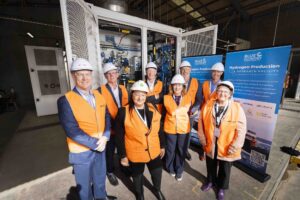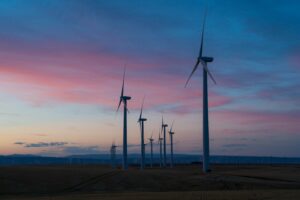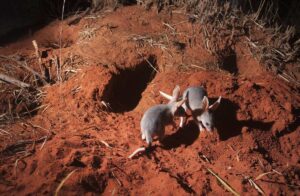The Australian Renewable Energy Agency has announced it will tip $4 million into a $12.3 million trial of Australian made wave energy technology off the coast of King Island, Tasmania.
The “oscillating water column” (OWC) technology comes from Melbourne-based company Wave Swell Energy, which has been founded by a number of industry veterans with links to failed wave power hopeful Oceanlinx, as RenewEconomy reported in July.
The pilot project will see the design, construction, installation and operation of the UniWave 200, a 200kW wave energy device off the coast of King Island, where it will be integrated with an existing microgrid operated by Hydro Tasmania.
In a statement on Monday, ARENA chief executive Darren Miller said the agency hoped the project would offer additional insights into combining wind, solar and wave energy.
“Wave energy has the potential to be integrated into microgrids, particularly on island locations with limited space, to reduce the need for significant battery storage due to the relative predictability and consistency of wave energy,” he said.
“The tidal and wave sector in Australia is still in the early demonstration phase. Wave Swell’s unique approach to wave energy will gain valuable knowledge and help to see whether this is a viable option for generating renewable energy.”
As we noted in July, the project will be closely watched, particularly in light of the checkered recent history of wave power generation in Australia – including the trials and tribulations of Western Australia-based company Carnegie Wave Energy.
It’s also somewhat of a leap of faith for ARENA, having also backed Oceanlinx, which went into receivership in 2014 after its commercial-scale generator was damaged en route to deployment in waters off Port MacDonnell in South Australia in 2013.
But Wave Swell Energy CEO Tom Denniss, who left Oceanlinx in 2011, told RE in July that the UniWave unit about to get its first real-world run in the Bass Strait is a much improved version of leading OWC technology, with potential to generate very cheap, clean energy.
Like Oceanlinx’s technology – which was named in a 2012 CSIRO study as one of Australia’s most promising and advanced home-grown wave energy technologies – the UniWave works by using waves to produce high pressure air, which is converted into electricity by a turbine.
The key difference this time round is that the units are uni-directional, instead of bi-directional, and so only extract energy on the downstroke of the compressed air.
Counter-intuitively, the team has discovered that this approach – while reducing the work of the turbine – also generates more energy than the bi-directional system.
“By extracting only on the downstroke… despite only getting energy one way, we actually get about 15 per cent more energy just on the downstroke than on the up and down.
“The turbine then is much simpler, cheaper, and more robust. And the blades are fixed and can have twist in them, which creates more efficiency,” he said.
“So there’s greater efficiency from the turbine as well as more conversion efficiency, and that obviously has major effects on the cost efficiency.
“Compared to the best of previous bi-directional OWCs, we’re getting roughly double the amount of energy, all things being equal, at half the cost.
“And there’s less moving parts – and none, whatsoever, in or below the water line, so no adverse affects on marine life.”
Denniss also suggests that the technology – if deployed at a large scale as multi-unit, multi-megawatt wave farm – could produce energy at 10c/kWh.
But there is a way to go, yet. The key goal of the 12-month pilot project is to supply energy into the local KI grid, initially using one unit, with the option to add another bigger one on the west coast of the island in the near future.
The company believes it should get a fair idea within three months, and with exposure to a reasonable range of wave conditions, of the sort of energy the units can produce in any particular location.
And after the first 12 months, if Hydro Tasmania is satisfied with the unit’s performance and how it integrates with the small Island grid, “the likelihood is that they will keep it running,” Denniss says.
In comments this week, Denniss said the ARENA funding was a huge boost to the technology at a key time.
“The project, aimed at demonstrating the commercial viability of the technology, is expected to be the first of many wave energy projects utilising this unique world leading intellectual property,” he said.
“ARENA’s role in the King Island project represents a vital component of the ultimate commercialisation of the technology.”










